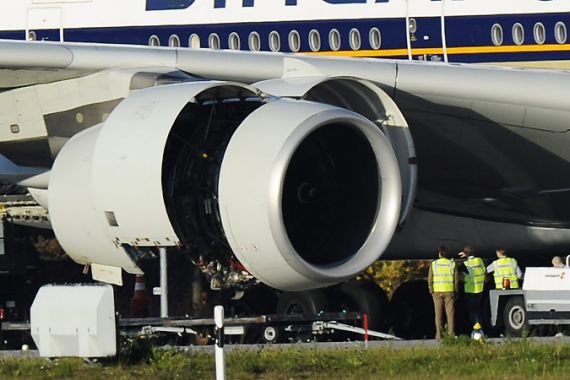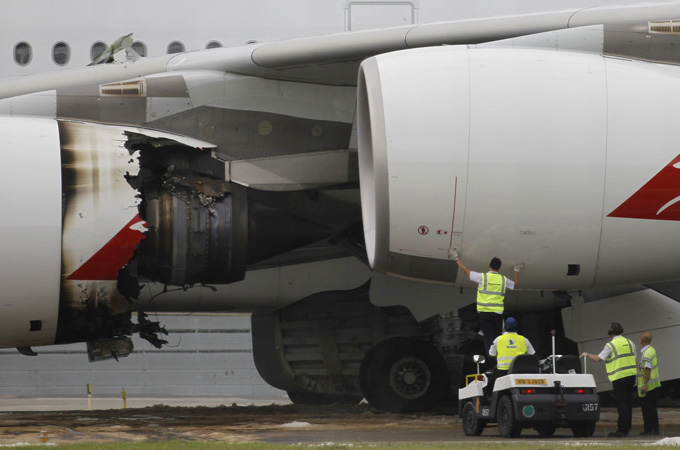Questions raised over A380 engines
Rolls Royce is in the spotlight over oil leaks in Trent 900 engine affect Singapore Airlines and Qantas.

 |
| Qantas grounded six A380s after an engine partially disintegrated mid-air, forcing an emergency landing [Reuters] |
Singapore Airlines has said it will replace engines on three of its Airbus A380 planes after finding oil stains on them, a week after Qantas grounded its A380 fleet after an engine exploded mid-flight.
German airline Lufthansa is also replacing one of its three A380 engines, following an inspection and talks with engine manufacturer, Rolls Royce.
Keep reading
list of 4 itemsA flash flood and a quiet sale highlight India’s Sikkim’s hydro problems
Why is Germany maintaining economic ties with China?
Behind India’s Manipur conflict: A tale of drugs, armed groups and politics
Investigations into the Qantas incident have focused on oil leaks inside the Rolls-Royce Trent 900 engines, the same model used to power Singapore Airlines’ and German Lufthansa’s A380 fleet.
Rolls-Royce, the UK-based engine manufacturer, has already said that the Qantas incident is specific to the Trent 900 engine, which is used in around half of A380 planes around the world.
Some airlines, such as Emirates, have used an engine made by GE Aircraft Engines and Pratt & Whitney in their A380s, and have reported no problems such as oil leaks to date.
Potential problems
Singapore Airlines has stressed that the problems on three of its 11 A380s were different from the oil leakage in the Qantas turbines, and that the measures taken on Wednesday were precautionary.
Chris Yates, a UK-based aviation analyst, said the oil stains found on the Singapore Airlines fleet could be a case of something relatively harmless.
“We could be talking about something as simple as the engineers, when the engines have gone in for maintenance, overfilling the oil reservoirs,” he told Al Jazeera.
“So that as pressure builds up as the engines are running some of that oil leaks out, which should not pose a major threat but it depends on hom much oil is leaking out.
He said it was important to know what variant of Trent 900 engine was used in the planes, with some possibly being more powerful than others.
“The Qantas one had more power, for want of a better expression. Up until today the issue has been entirely related to the Qantas aircraft. This development today suggests that three of the Singapore aircrafts have a similarly powered engine.”
He said Rolls Royce, which has an excellent safety record, based the Trent series of engines on two older models that were reliable machines.
“Are we coming down to something as simple as an oil leak because an engineer has overfilled it or something much more serious in that the engines have a fundamental problem somewhere?
“We don’t know whether that is the case yet … but we know that we have some oil where oil shouldn’t be.”
Rolls Royce statement
Rolls Royce has said it is investigating what led to the Qantas engine failure.
“A series of checks and inspections has been agreed with Airbus, with operators of the Trent 900 powered A380 and with the airworthiness authorities,” it said in a statement on Monday.
It added that an explosion which occured in August 2010 during testing in Derby, Britain, was a separate event involving the Trent 1000 engine.
In the meantime, however, the Qantas incident has seen Rolls Royce’s stock market value drop by $1.6bn, a loss which has been marginally recovered following reports of progress on investigations and a new deal with China.